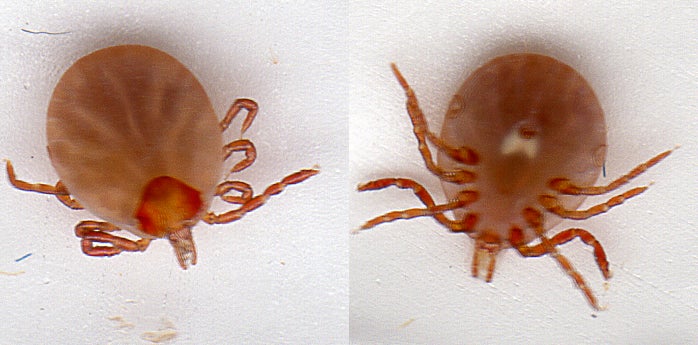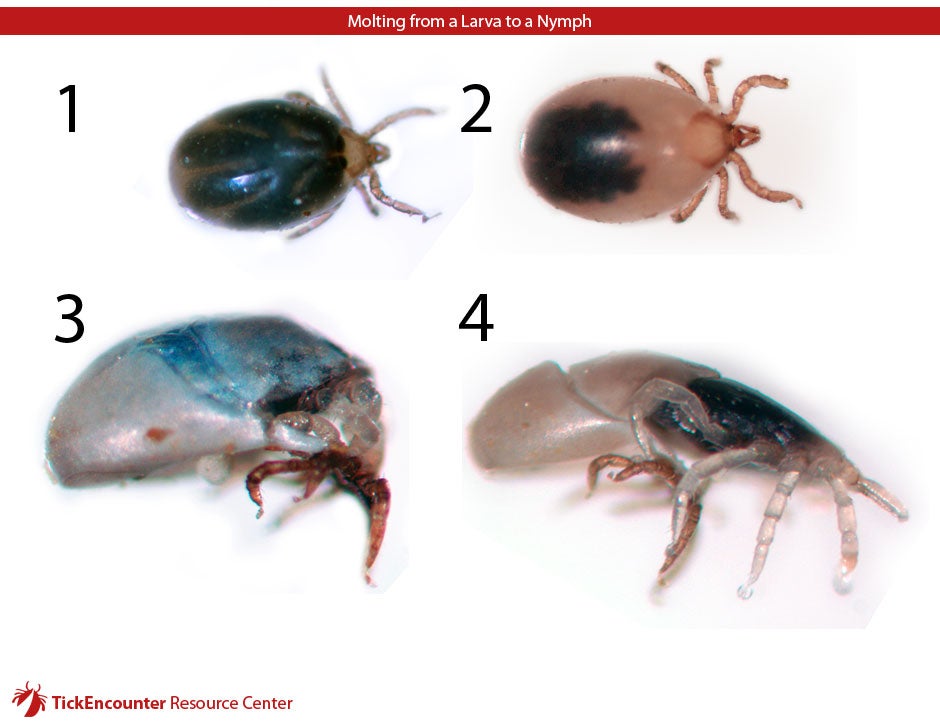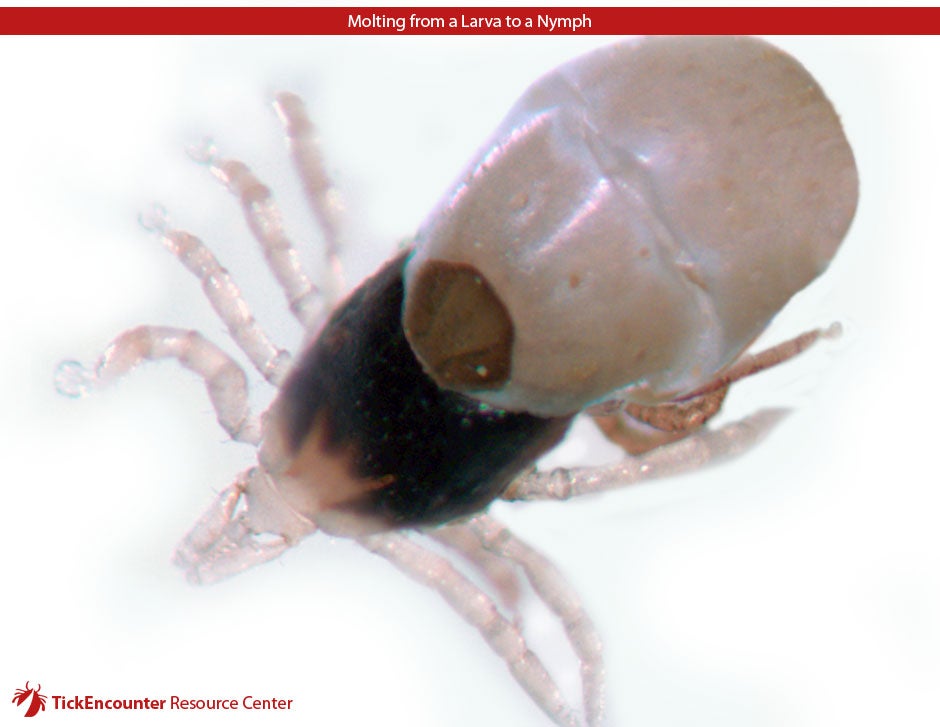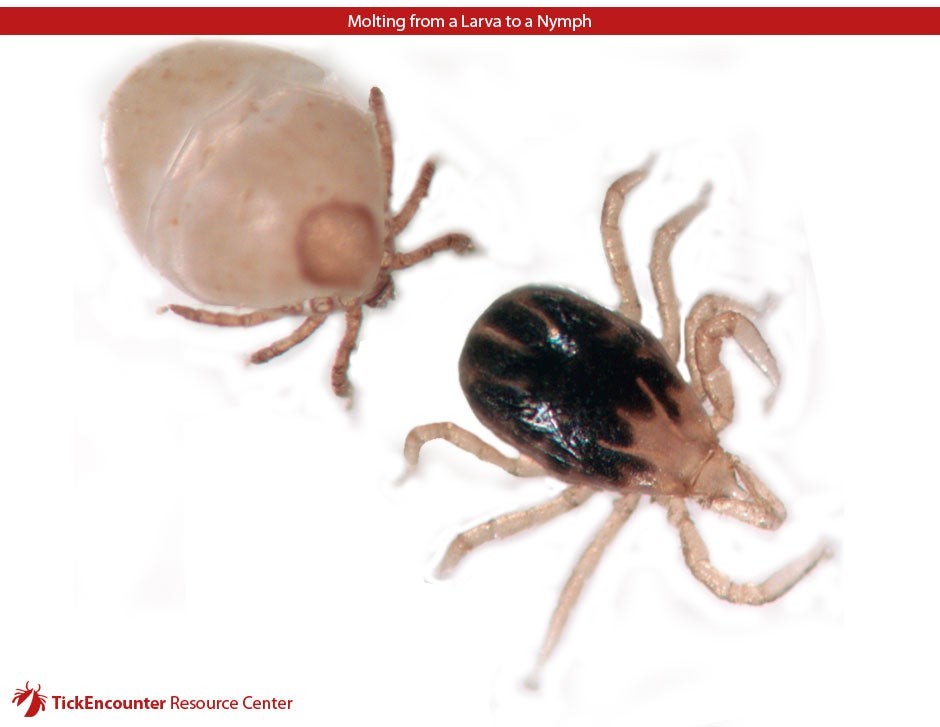Q: In my class we were discussing ticks, and the students noted that larval-stage ticks have 6 legs but nymphs have 8. Do the new set of legs grow from the front (closest to the head) or the back, or somewhere else, and do these legs just sprout like frog legs on tadpoles? Ann C., Tennessee
TERC Answer: After taking their blood meal, all hard ticks go through a molting process and turn into their next life stage. Six-legged larvae become nymphs, eight-legged nymphs become either adult male or female ticks. The immature stages use the protein of the blood meal to grow; adult female ticks use the protein of the blood meal to mature thousands of eggs. From what we could observe, it seems the extra set of legs nymphs grow develop during the molting process inside of the outer shell of the engorged larva (Fig 1 #2). The extra legs are fully formed as the newly molted nymph emerges (Fig 2). We think the extra pair of legs are the ones at the back (Fig 3). We’re really not sure why larvae don’t have them and apparently don’t need them.
Q. “My tick had a white spot on its underside! I thought the white spot on Lone Stars was on the top side? What kind of tick is this?“ Josh B., Alabama

TERC Answer: You’ve encountered a nymph stage lone star tick. This one looks like it was attached for about 2 days. The Lone Star “white spot” is pigment and is only found on the adult stage female–in the middle of the tick’s TOP side, always positioned on the rear margin of its scutum. The male has white pigment markings on its’ back end since the scutum covers the whole tick body in males, but the pigment cells are typically spread out more to form a diffuse pattern instead of the more concentrated spot on the female. The scutum on nymph stage lone stars is always plain.
The “white spot” you’re seeing on the underside of the tick is actually an accumulation of guanine crystals in the tick’s rectal sac as it starts blood digestion. In unfed ticks, the rectal sac would be empty, so no white spot. This spot can appear in any partially- or fully-fed tick but it appears most commonly and often even as the tick is blood feeding in lone star ticks.
Although not always present, the rectal sac “white spot” can be a useful aid in tick identification, especially in the smaller nymphs and even larvae, mainly because it highlights the location of the anus. In lone stars, the internal rectal sac and external anus is positioned more centrally on the tick underside, while in blacklegged ticks, it’s positioned further posteriorly.



